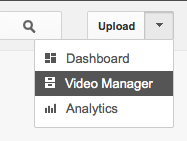Easy-to-Use Collaboration Tools
How would students' learning change if they could work with each other? Online?
ISTE (International Society for Technology in Education) has identified the standards for students that promote the development of skills necessary to for a successful future. Throughout the years, the standards have varied, however the skills of communication and collaboration have been constantly present. As we're planning to provide opportunities for our students to engage in authentic forms of collaboration you might have come across a variety of digital tools. When selecting them, ask yourselves: Does it promote communication? Does it allow sharing a document or file? Is it easy to learn and use?
There are a number of tools designed for online collaboration. In my opinion, one of the best and most complete is Google Apps. However, students need to have a Google account in order to create and fully make use of it's features. But don't let that discourage you because included here are two collaboration tools for you to explore and try out with your own students.
TitanPad - Students can type on the same document simultaneously, no sign-up required. (Make sure to check the deletion policy.)
Twiddla - Kids can draw on the same canvas simultaneously, no sign-up required.
Uses in Education: You might want to try these tools especially if your students do not have a Google Account yet. Students can collaboratively create a story, engage in a discussion, develop a graphic organizer, and more. All anyone needs is the link to the document. The best part, it works just the same on an iPad. If you have younger kids, you may want to create QR codes to easily access the links.
Give them a try! You won't believe how easy they are to use!
Cheers!
ISTE (International Society for Technology in Education) has identified the standards for students that promote the development of skills necessary to for a successful future. Throughout the years, the standards have varied, however the skills of communication and collaboration have been constantly present. As we're planning to provide opportunities for our students to engage in authentic forms of collaboration you might have come across a variety of digital tools. When selecting them, ask yourselves: Does it promote communication? Does it allow sharing a document or file? Is it easy to learn and use?
There are a number of tools designed for online collaboration. In my opinion, one of the best and most complete is Google Apps. However, students need to have a Google account in order to create and fully make use of it's features. But don't let that discourage you because included here are two collaboration tools for you to explore and try out with your own students.
TitanPad - Students can type on the same document simultaneously, no sign-up required. (Make sure to check the deletion policy.)
Twiddla - Kids can draw on the same canvas simultaneously, no sign-up required.
Uses in Education: You might want to try these tools especially if your students do not have a Google Account yet. Students can collaboratively create a story, engage in a discussion, develop a graphic organizer, and more. All anyone needs is the link to the document. The best part, it works just the same on an iPad. If you have younger kids, you may want to create QR codes to easily access the links.
Give them a try! You won't believe how easy they are to use!
Cheers!
This article was also published in ASFMLearns.






Comments
Post a Comment